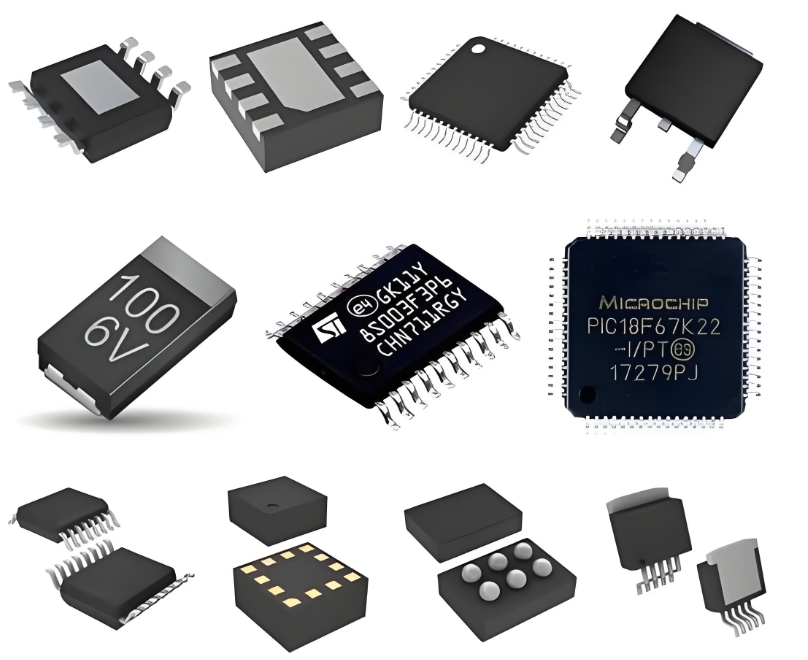**OP497FS: A Comprehensive Analysis of its Precision Performance and Circuit Design Applications**
The pursuit of precision in analog circuit design demands components that offer exceptional stability, accuracy, and reliability. Among the key enablers of such performance are precision operational amplifiers, and the **OP497FS from Analog Devices** stands out as a quintessential example. This ultra-low offset voltage, quad operational amplifier is engineered for applications where minimal error and high precision are non-negotiable. This article provides a comprehensive analysis of the OP497FS's performance characteristics and explores its critical role in advanced circuit design.
**Precision Performance Characteristics**
The hallmark of the OP497FS lies in its electrical specifications, which are meticulously tailored for precision tasks. Its most notable feature is its **extremely low input offset voltage** of 85 µV maximum. This parameter is critical as it represents the inherent error present at the amplifier's inputs, directly impacting the DC accuracy of any circuit. Coupled with a very low offset voltage drift of just 1.2 µV/°C, the amplifier maintains its accuracy over a wide temperature range, ensuring consistent performance in varying environmental conditions.
Furthermore, the OP497FS exhibits **remarkably low input bias current**, typically 1.8 nA. This is achieved through the use of super-beta transistor input stages. Low bias current is essential for applications involving high-impedance sensors or precision integrators, where even small currents can introduce significant errors. Additional attributes include high open-loop gain (1200 V/mV), which ensures gain accuracy in closed-loop configurations, and an excellent common-mode rejection ratio (CMRR), which minimizes errors from noise or interference common to both input terminals.
**Key Circuit Design Applications**
The combination of these precision features makes the OP497FS exceptionally versatile in a multitude of demanding applications.

1. **High-Accuracy Instrumentation Amplifiers:** The quad configuration allows for the construction of a classic 3-op-amp instrumentation amplifier with matched characteristics across all amplifiers. This is vital for amplifying small differential signals from sensors like strain gauges or thermocouples while effectively rejecting common-mode noise. The low offset and drift of the OP497FS ensure that the amplified signal is a true representation of the sensor output, maximizing measurement fidelity.
2. **Precision Active Filters:** In multi-pole active filter designs (e.g., Sallen-Key or state-variable filters), the use of multiple amplifiers with closely matched parameters is crucial for achieving the predicted frequency response. The quad nature of the OP497FS ensures excellent channel-to-channel matching, while its low noise and distortion characteristics preserve signal integrity throughout the filter's passband.
3. **Low-Drift Analog Signal Conditioning:** For systems that require precise conditioning of DC or low-frequency signals, such as in medical instrumentation or precision weigh scales, the OP497FS is an ideal choice. Its low offset voltage and drift eliminate the need for frequent calibration, and its low bias current allows it to interface directly with high-impedance sources without loading errors.
4. **Quad Voltage Followers / Buffers:** The amplifier's high input impedance and low output impedance make it perfect for use as a buffer to isolate stages within a circuit. Using a single IC to provide four matched buffers simplifies board design and ensures consistent performance across all channels, which is beneficial in data acquisition systems and multiplexed applications.
**Conclusion and Design Considerations**
While the OP497FS offers outstanding precision, designers must still adhere to best practices to realize its full potential. Careful attention to PCB layout, including proper grounding and decoupling, is mandatory to mitigate noise and parasitic effects. The use of low-thermal EMF sockets or direct soldering is recommended to prevent thermocouple effects that could degrade the low-offset performance. For the most demanding applications, external nulling circuits may be employed to further minimize any residual offset voltage.
**ICGOODFIND:** The OP497FS stands as a benchmark for precision analog design, integrating four matched, high-performance op-amps in a single package. Its unparalleled combination of **ultra-low offset voltage, minimal drift, and low bias current** makes it an indispensable component for engineers designing systems where accuracy and stability are paramount.
**Keywords:** Precision Operational Amplifier, Low Offset Voltage, Low Input Bias Current, Instrumentation Amplifier, Signal Conditioning
